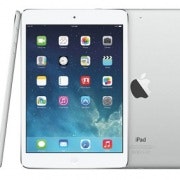Motorola and Nokia - a tale of two takeovers
The smartphone heavyweights spent the last few weeks scrambling for attention before Apple's annual iPhone circus finally rolled into town. This time last week Nokia was showing off its new "Lumia" Windows Phone 8 handsets in a trendy warehouse on New York's 22nd Street -- phones born of Nokia's strategic partnership with Microsoft. Meanwhile over on Broadway, Motorola was spruiking its latest RAZR handsets running Android 4.0 -- the first from Motorola Mobility since it was acquired by Google. It was well worth the walk up 7th Avenue from Nokia to Motorola's launch, as the tone of the two events was very telling of the relationships between the two phone vendors and their new masters.
Nokia's Lumia 920 launch made it clear that Microsoft is the sugar daddy calling the shots in this relationship, a relationship forged last year in an effort to bolster Windows Phone 7 while saving Nokia from the cumbersome Symbian. Microsoft may not "own" Nokia but, having joined Microsoft while promising to forsake all others, the once proud phone giant appears to be at Microsoft's mercy and its fate is clearly tied to Windows Phone 8. Should Nokia stumble, it could well fall into Microsoft's arms.
Microsoft footed half the bill to fly in journalists from around the world but, in a last minute change of heart, refused to speak to the media and banned Nokia from speaking about the wider Windows Phone 8 picture. At its own launch Nokia was restricted to talking about its new hardware and the features which Nokia developed for Windows Phone 8 such as mapping. Straying beyond those subjects was met with a polite but firm "we're not talking about that today".
Yet across town Motorola seemed much more comfortable in the certainty of its new relationship with Google. It's only three months since Google officially closed the deal on its purchase of Motorola Mobility, but you can already see the search giant's efforts to sharpen Motorola's focus -- which includes shedding 20 percent of staff -- without playing favourites in the Android ecosystem.
Motorola Mobility's senior vice president of product management, Rick Osterloh, spoke openly of the Google deal during our chat after the official launch of three new Motorola Razr handsets. Osterloh lead Motorola's early Android strategy before he was poached by Skype in 2010. Not long after that Microsoft snapped up Skype, but Osterloh returned to Motorola this year under Google.
Under Google, Motorola intends to sharpen its focus and will release fewer products. Hybrid "webtop" products such as the Atrix smartphone/netbook will be ditched. Motorola will also aim to deliver Android updates to handsets faster, even though the new RAZR handsets will ship with Android 4.0 "Ice Cream Sandwich" rather than 4.1 "Jelly Bean".
"It's really just timing issues, but we're going to make Jelly Bean available as soon as we possibly can," Osterloh says.
"I think users expect upgrades faster and we want to get them out to them. It's definitely a pain point that we're trying to solve. Part of the thinking going forward is how do we design these phones for long-term ownership and for upgradability. Frankly before at Motorola that wasn't at the top of mind, but it's a change going forward."
Motorola unveiled three handsets at the launch, the 4.7-inch RAZR HD and HD Maxx along with the 4.3-inch RAZR M. Each will feature a 1.5 GHz dual-core processor, LTE 4G, Near Field Communications and extended battery life. Only the HD and M are coming to Australia, as Telstra exclusives which will be available by Christmas.
Apart from the fact they come preloaded with Google's Chrome browser, there is nothing to show for Motorola's new relationship with Google. If anything, it's the absence of influence which stands out. Motorola's Motoblur Android skin and ecosystem have been abandoned, which some would argue is no great loss.
Unlike other Android vendors, Motorola intends to limit its Android skin modifications to reduce the time required to make updates available to handsets. "Our aim will be to be as close to the pure Android experience as we can," Osterloh says, "but there will be areas where we innovate if Android isn't solving a consumer problem for whatever reason."
While a close relationship with Google would obviously assist with this, Osterloh insists that strict protocols are in place to ensure that Motorola does not have an advantage over other Android handset makers.
"We won't have a jump on anyone because of a structural reason. We have quite a bit of independence and we have a firewall procedure between us and the Android team, so we're participating like any other [Original Equipment Manufacturer] in the Android ecosystem," Osterloh says.
"We don't have access to code before anyone else. It's very important for Google to make sure that the Android ecosystem stays a fair playing field, that's a key design feature for Android."
Adam Turner travelled to the Lumia 920 launch in New York as a guest of Microsoft and Nokia.
















